BLADDER & BOWEL CONTROL HEALTH
Cherilyn FoxA role model for acquired disability
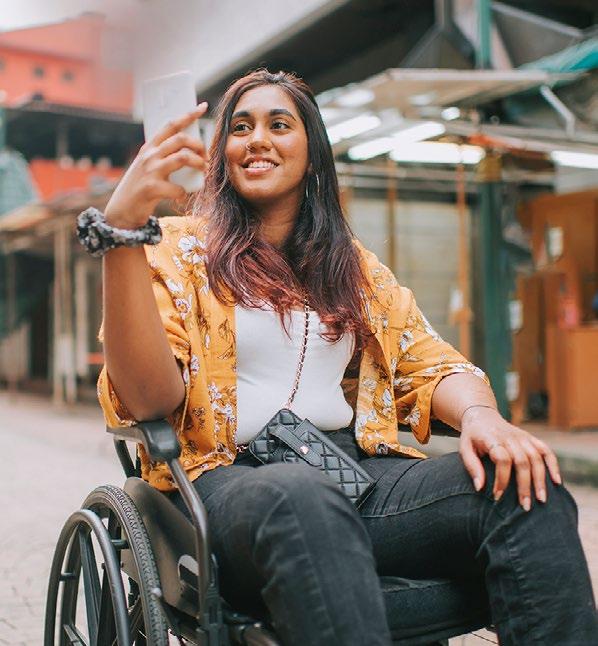
Stephanie's storyNot every disability is visible
Navigating the NDIS
Readiness for kinder and schoolToilet training
2023
SUMMER
Published by the Continence Foundation of Australia
Writer and Editor Nicola Reid Designer Rosa Piciocco
ISSN 1836-8107. Online version ISSN 1836-8115.
Bridge is published quarterly by the Continence Foundation of Australia. It is supported by the Australian Department of Health under the National Continence Program.
The information in Bridge is for general guidance only and does not replace the expert and individual advice of a doctor, continence nurse or continence physiotherapist. Bridge cannot be reprinted, copied or distributed unless permission is obtained from the Continence Foundation of Australia.
Advertising The Continence Foundation of Australia appreciates the support of advertisers in publishing Bridge. Advertising conforms to the standards required by the Continence Foundation of Australia, but endorsement is in no way implied by the publishing of said material.
References For a list of references for any articles appearing in Bridge, please email bridge@continence.org.au
Become a member of the Continence Foundation of Australia and receive many benefits including discounted registration to the annual National Conference on Incontinence, free publications and timely information about events and education courses.
Email membership@continence.org.au or Phone 03 8692 8400.
The Continence Foundation of Australia greatly values the stories people share of living with or caring for someone with incontinence. Reading the experience and advice of others can make a huge difference to someone in a similar situation. If you would like to share your story with us, please register on our website. Go to www.continence.org.au/life-incontinence/personal-stories#sharestory
Unless otherwise indicated, the photographs used in Bridge are those of models and bear no resemblance to the story.
NATIONAL OFFICE
Continence Foundation of Australia Suite 1, 407 Canterbury Rd, Surrey Hills VIC 3127 Ph 03 8692 8400 | Fax 03 9380 1233 | Email info@continence.org.au
@Continenceaus @AusContinence Continence Foundation of Australia

To subscribe to our mailing list and receive each edition of Bridge magazine in your inbox, go to www.continence.org.au/about-us/our-work/bridge magazine
If you do not have access to an e-mail address, call us and we can send hard copies of Bridge Magazine on a case-by-case basis.
2 // SUMMER 2023 // Bridge
A free service staffed by Nurse Continence Specialists who can provide information, referrals and resources 8am
8pm
weekdays.
National Continence Helpline 1800 33 00 66
-
AEST
The Foundation, established in 1989, is a not-for-profit organisation.
continence.org.au CONNECT WITH US
NOTE FROM THE CEO

Welcome to the Summer edition of Bridge. This issue focuses on disability which we know can be complex, varied and may present in many different forms. Some people with disability are highly visible and receive a considerable amount of unwanted attention, whilst others may not look visibly disabled, forcing them to constantly explain why they need consideration and support.
I particularly like the World Health Organisation definition of disability which reminds us that disability is part of being human and is something almost all of us experience, either permanently or temporarily, at some point in our lives. This reminds us not only of our own potential vulnerability but to also put ourselves in the place of those trying to navigate inaccessible environments. This edition features the stories of four lived experiences with disability, each with their own challenges, learning and insight.
Disability associated urinary incontinence is defined by the International Continence Society (ICS) as urinary incontinence in the presence of a functional inability to reach a toilet in time. This may occur in those living with a physical or cognitive condition which may impact their ability to access the toilet. We explore the causes and management tips, particularly for carers, and where to seek further information and support.
We have a step-by-step guide to the National Disability Insurance Scheme (NDIS) and how you can utilise it to assist you to access funding and services if you are eligible. We also explore the benefits of a continence assessment and how this may help people living with incontinence and their carers with better management and improved functionality and quality of life. We also include travel tips for the Christmas holidays, with our new features on the National Public Toilet Map and our Nurse Continence Specialists share toilet training tips for those parents who have young children going to kindergarten or school for the first time in 2023. Wishing you all a safe, and happy Christmas and we look forward to supporting you in the New Year.
Please share this edition with everyone you think would benefit from reading this. Anyone looking for more advice and information about bladder, bowel and pelvic health can also phone the National Continence Helpline on 1800 33 00 66.

IN THIS ISSUE 03 Note from the CEO 04 Disability - An overview 06 Cherilyn Fox - A role model for acquired disability 10 Jaydan Rufus – Please don’t patronise me 12 Stephanie’s story - Not every disability is visible 14 Navigating the NDIS 18 The Benefits of a Continence assessment 19 Leanne’s story - How travel helped me to reclaim my life 22 Q&A Helpline - Travel tips 24 Readiness for kinder and school –Toilet training Bridge \\ Summer 2023 \\ 3
Rowan Cockerell, CEO, Continence Foundation of Australia
DISABILITY - AN OVERVIEW
The United Nations defines people with disabilities as ‘those who have long-term physical, mental, intellectual or sensory impairments which in interaction with various barriers may hinder their full and effective participation in society on an equal basis with others.’
Our attitudes towards illness and disability are highly influenced by the culture in which we live. Society defines how we categorise people and our initial judgement of people is usually based on their physical appearance and our tendency to stereotype. Most of the negative attitudes towards disability come from a lack of proper understanding of disabilities and how they affect functioning.
According to the World Health Organisation (WHO), ‘disability is part of being human and almost everyone will temporarily or permanently experience disability at some point in their life, especially as we get older.’
However disability is defined, it is incumbent upon all of us to consider our attitudes and approaches to people with disability and work towards removing the barriers that often prevent them from participation in society on an equal basis. Being treated differently focuses on the disability of the

individual rather than their abilities and potential for valuable contribution.
According to WHO, a person’s environment has a major impact on their experience and extent of disability. Inaccessible environments create barriers that often prevent the full and effective participation of persons with disabilities in society. Progress on improving social participation can be made by addressing these barriers and facilitating persons with disabilities in their day to day lives.
Whilst attitudes, behaviour and social structures take time and perseverance to change ‘efforts to eliminate all forms of prejudices and discrimination against persons with disabilities by some of the United Nation’s agencies, governments, and national and international disability organisations are being realised.’
4 // SUMMER 2023 // Bridge
DISABILITY ASSOCIATED URINARY INCONTINENCE
Disability associated urinary incontinence is defined by the International Continence Society (ICS) as urinary incontinence in the presence of a functional inability to reach a toilet in time. This may occur in those living with a physical or cognitive condition which may impact their ability to access the toilet. Disability associated urinary incontinence is when a person is unable to:
| recognise the need to go to the toilet
| locate the toilet
| access the toilet
| manage their personal needs (e.g., remove clothing)
| recognise the toilet.
CAUSES OF DISABILITY ASSOCIATED URINARY INCONTINENCE
When someone has disability associated urinary incontinence it often means there is a physical, intellectual, or environmental issue that makes it difficult for them to use the toilet. Some of the causes of this include problems with walking/mobility, such as with arthritis or cerebral palsy, and problems with memory or learning, such as dementia and intellectual disability.
TIPS FOR CARERS
9 The right approach to caring for someone with disability associated urinary incontinence depends on their individual needs. There are many strategies that can be used to help them, depending on what is preventing them achieving continence as well as their individual needs or condition.
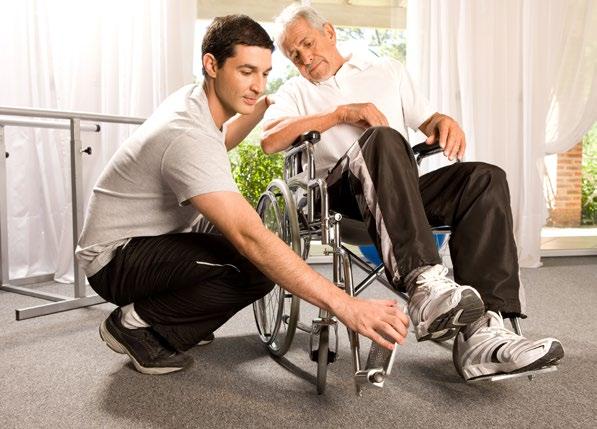
9 If there are physical barriers, toileting aids, easily removed clothing and wiping aids can help. Removing clutter, ensuring good lighting and mobility aids can also assist.
9 If there are cognitive barriers (e.g., dementia), ensure the toilet is visible using signs, pictures, and good lighting. Also take notice of any cues the person may give when they want to use the toilet (e.g., pulling at clothing, restlessness, etc.).
9 If you have any concerns about a person’s functionality and continence always consult a healthcare professional. You can also call the National Continence Helpline on 1800 33 00 66 for free and confidential information and advice.
9 Knowing the person’s normal toileting routine will ensure help can be available at the right time.
For more information and to download resources which may assist, go to continence.org.au/typesincontinence/urinary-incontinence/functionalincontinence
Bridge \\ Summer 2023 \\ 5
CHERILYN FOX - A ROLE MODEL FOR ACQUIRED DISABILITY
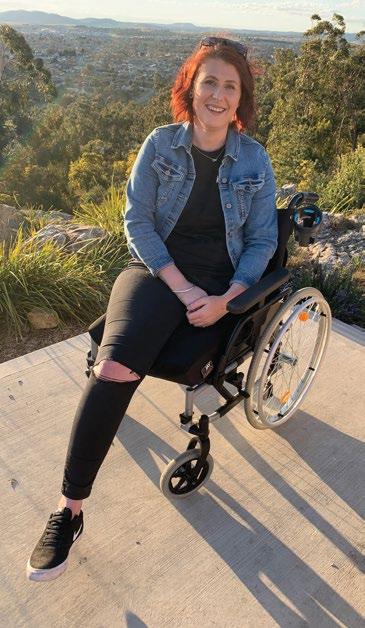
When Cherilyn Fox speaks, teenagers listen. Cherilyn’s mission is the prevention of alcohol and drug related trauma in youth. When she tells her story to a group of 200 kids all eager to get their driver’s license and hit the road, she says you could hear a pin drop. Sharing images of the car accident scene where she had to be resuscitated several times, and hearing about her multiple injuries, including a severed femoral artery (the main artery supplying blood to the leg), requiring a thigh high left leg amputation, tends to leave her listeners speechless.
“I tell them I was out drinking with a friend one second and the next I woke up with both my parents there, and I thought this is either a dream or something really bad has happened,” says Cherilyn, whose memory of the following months she describes as ‘blurry.’ “I want younger people to take home the message it could happen to any one of them and none of us are invincible.” Cherilyn describes sharing her story and seeing it’s impact on young people as “such a healing experience. It’s what keeps me going,” she says. “If my story helps to save just one life, I have had the impact I wanted.” As well as her amputation, Cherilyn experienced a smashed pelvis and hip fractures, collapsed lungs, a perforated bowel requiring surgery to create a
stoma (colostomy), a ruptured bladder requiring a temporary urinary catheter, and many other injuries. Medical staff assumed she would also have major brain damage from the loss of blood and oxygen to her brain. “The scores I have against the injuries I sustained are at the highest levels without actually passing away that the trauma team had seen,” says Cherilyn. “The numbers scored against my injuries were up around 50/75. On average, people don't generally survive if the score is around 18/75. This is why the hospital team are so shocked I am the way I am today and that I actually made it through.”
6 // SUMMER 2023 // Bridge
Cherilyn Fox
Cherilyn’s recovery still took, and will continue to take time, not to mention constant adjustment. “Waking up on my 30th birthday to a wet bed when I was working on retraining my bladder was very different to my 29th birthday,” says Cherilyn, who experienced incontinence until her bladder was able to recover following the repair to the damage it sustained. Her stoma has also now been reversed and she no longer needs a stoma bag. She says, “fifteen months down the track, everywhere seems to now be recovering quite well which is awesome!”
After an extensive time in hospital and rehabilitation, Cherilyn was able to move into her own apartment with the support of her family. Initially she had carers to assist her but found it stressful having strangers in her home. She describes herself as fairly selfsufficient now and has a cleaner who comes once a week and does the areas she can’t manage.
Acquiring a disability in adult life brings with it a whole lot of new and confronting challenges. Navigating a less abled life means every action and intention requires a series of well-thought-out steps. Crossing from the world of ableism, which discriminates in favour of able-bodied people, to negotiating the world as a person with a disability means spontaneity and impulse become like lost old friends.
It's like we all live our lives on autopilot until something like this happens and we realise how much we have formerly taken for granted. “Something as simple as taking my rubbish out requires negotiating my heavy front door and manoeuvring through a small, tight space,” says Cherilyn. “I can’t just pick it up and go. You need a thought process for everything! Cooking and hanging out washing from a seated position are really hard. These are all the things I never thought about. Independence is something I so took for granted. We don’t stop to appreciate oh my god I can walk, or I don’t need help to go to the toilet or shower and I can just duck to the shops to get milk and I don’t really have to think about it.”
Having a noticeable physical disability can also attract a lot of unwanted attention. “What I struggle the most with is people staring at me when I’m out in public,” says Cherilyn. “Kids don’t bother me at all, but the glare from adults can be full on. I want to say, ‘leave me alone, I’m not in the circus!’ I get asked all sorts of crazy and very personal questions,” she says. Whilst acknowledging she has her ‘dark’ days, Cherilyn focuses mostly on the opportunities that
have come her way since the accident. This includes meeting and collaborating with Anja Christoffersen, founder of the Champion Health Movement which empowers people with disability, and chronic illness to have a voice. “I love what she does and how she gets behind people. We work well together, and Anja is so supportive,” says Cherilyn. “When I was in hospital, I couldn’t find anyone who’d been through what I had and posted about it. I want to be that voice and the person people can reach out to.”
Represented by Champion Health Agency, Cherilyn spoke at the Sydney Disability Expo in August 2020 on Changing perceptions around disability: a perspective of someone with a newly acquired disability. She says, “while life has been incredibly difficult over the last year and a half, I have had some truly amazing opportunities like this!”
It has been almost two years since the crash and Cherilyn’s approach to life is a testament to the fact that while we can’t always choose what happens to us, we can choose how we respond to it. Her infectious laugh, beautiful smile and sense of humour belie what has obviously been a massive impact on her life as she formerly knew it. Whilst she says there are definitely very dark days, something that is striking about Cherilyn is her strong sense of self and purpose. She says she just tries to get on with life and the belief she can do anything. “My brother says, you’re so independent I forget you have a disability. I was dead on arrival at the hospital on the 9 January, and I was driving and living on my own in August,” she says.
“It has definitely been a big change that took a lot of getting used to and continues to be. I still face more surgeries, so I’ll be going through more challenges and recovery for a number of years yet,” she says. She also experiences ongoing pain, requiring multiple pain medications which make her constipated, so she often needs to take laxatives.
Cherilyn will next undergo osseointegration, where an artificial implant is surgically attached and integrated into her bone, which can then be attached directly to a prosthesis such as an artificial
Bridge \\ Summer 2023 \\ 7
''When Cherilyn Fox speaks, teenagers listen.''
limb. “My recovery will be ongoing for the rest of my life,” she says. “If I go through osseointegration (most likely option), I will have to have surgeries every two years for the rest of my life.” Clearly there is still a long way to go.
Navigating her daily life with a disability has uncovered a whole new world of issues Cherilyn previously never had to think about. She wants to see improved accessibility to public toilets and removal of the barriers and obstacles. “I’m really passionate about creating change and shocked by what I’ve experienced since I’ve been out of hospital. I’m blown away by what I’ve seen with the state of public toilets and the lack of disabled access and facilities,” she says. “I live in a country town which has extremely poor accessibility for disabled people.
There are things I would never have thought of before my accident, like when people just leave a supermarket trolley in the middle of a walkway. I can’t go around it. I need to move the trolley as it’s blocking my path.”
“Recently I was at a soccer game and the only public toilets available were the standard male/female ones. I had just had my stoma reversed so I wasn’t always sure when I needed to go to the toilet, and it came on suddenly. Luckily, I had my Mum with me, and I still have my right leg, so I was able to get up and hop to these toilets, holding on to the doors on the way. If I wasn’t able to do that, I would have had an accident and it makes me think if I couldn’t weight bear on my right leg, I wouldn’t have made it and then I also wouldn’t have had anywhere to clean myself up. It’s really quite scary.”

This is yet another example of the huge challenge of having been an able-bodied person suddenly having to negotiate life with an acquired disability.
“If I’m driving and I suddenly need to go to the toilet,
Cherilyn Fox
8 // Summer 2023 // Bridge
firstly I have to find an accessible one, then park my car, which needs to be on a flat part of the footpath, then get my wheelchair out and assemble it. I can’t just get up and go. I’m lucky I still have the strength of my right leg to balance on if I’ve got other people there but going to the toilet is just something you don’t really want help with,” she says.
“I’m really passionate about creating change out in public because I think of other people who don’t have the movement that I have and have to depend on carers and all that extra help. So, if facilities could be more accessible to have that little more independence, it could make a big difference to so many people’s lives,” she says.
Cherilyn also wants to raise awareness so that people better respect accessible public toilet spaces and think about the next person who might need to use them, especially someone who is disabled. “When we’re out and about, sometimes we don’t have any other options but to use the only accessible public toilet,” she says. “If someone else has left a mess all over the seat, I have to clean that up because I cannot squat over a toilet. In so many places, like service stations and park grounds, there is generally only one accessible public toilet, and in my experience, nine times out of ten there is something wrong with them. Either the toilet is clogged or trashed, the lock on the door is broken, or there is water everywhere and we could easily slip and experience further injuries. Please, respect these public spaces for everyone to access.”
Cherilyn and her partner love four-wheel driving and the outdoors, but she finds this difficult to access at the moment. “One of my big goals is to get on the road and be able to go around Australia and different camp sites and have a map where we have a rating system on the facilities, so people know which ones are accessible and what the level of accessibility is, and what types of mobility aids can be used in that area,” she says. “The National Public Toilet Map is excellent, but I’d like to see better signage for public toilets, more information about ambulant facilities, and whether there is a table to change your stoma bag, as some key examples.”
In response to the question of where her drive and strength come from, Cherilyn says “once I wake up in the morning, I’m in a fair bit of pain so I have to get up and move to ease it and take my pain meds. So, that’s what gets me out of bed!” she jokes. But seriously, “I love sharing my story with school kids
who are about to get their driver’s license, think they’re invincible and have the attitude ‘that won’t happen to me,’” she says. “I love being a part of something bigger. This accident has made me realise that before I was so self-centered and the small things seemed so big. When I talk to those kids, if I touch a nerve or make them realise they are not invincible and this could happen to any one of them, then I’ve achieved my goal.”
Cherilyn wants to continue educating on prevention as well as supporting those in need. “I would love to be able to go into hospitals and talk to people who are going through what I’ve already been through,” she says. “Helping is very healing for me. That is where I get the strength to keep going…and my nephews, they’re beautiful and I want them to see that you can do anything. I believe what you can think of you can do. I definitely have a much stronger passion than I did before. Knowing it is possible and I can help is really cool.”
The quote on Cherilyn’s Instagram account pretty much sums it up - “If you don’t fight for what you want then don’t cry for what you lost.”
Cherilyn would like to acknowledge the P.A.R.T.Y (Prevention of Alcohol and Risk related Trauma in Youth) program which she was introduced to while she was in hospital. P.A.R.T.Y Program Coordinator, Nardine Johnson, was present in Cherilyn’s family meeting within the first couple of days after the accident, advising her family of the extent of her injuries. “P.A.R.T.Y have been a massive part of my healing journey. I’m not sure just where I’d be without them,” says Cherilyn. “Nardine has been there with me since day one and it’s an absolute pleasure to be working with her having an amazing impact on these young adults’ lives.”
For more information go to PARTY ProgramCanberra Health Services (act.gov.au)

Bridge \\ Summer 2023 \\ 9
JAYDAN RUFUS
Jaydan is 25 years old, lives with cerebral palsy and has used a wheelchair for most of his life. For the last three years he has worked voluntarily for the Children’s Hospital Foundation, on site at the Queensland Children’s Hospital where he helps people with directions and provides information on the services and support provided by the Foundation for sick children and their families. In this environment, Jaydan estimates that approximately 50 to 60 per cent of people have a mobility issue, so he feels like he blends in. “In my three years of volunteering, hardly ever has anyone asked me why I’m in a wheelchair,” he says.
It's a different story in his work as a ‘customer greeter’ for a major Australian department store. Jaydan works two to three nights per week plus a weekend shift and estimates that he is on the receiving end of questions about his disability on average about three to four times per shift. While his role is to direct customers and answer any questions related to shopping in store, he is understandably annoyed that people think it is okay to ask him personal questions. “People can be so patronising,” says Jaydan. “If they’re not asking me why I’m in a wheelchair, they pat me on the shoulder and say ‘look at you, it’s great to see you out and about. You’re doing such a good job!’”
Jaydan says his reaction to this depends entirely on the person and the manner in which they address him. Whilst his position at the front of the store can be a vulnerable one and at times, he has felt fearful, he also has a good sense of humour and the larrikin in him can give just as good as he gets. “Sometimes I say I didn’t eat my vegies and that’s why I’m in a wheelchair,” he says with a cheeky smile. “It gets a great response, especially if there are children around!”
Like many people with a disability, Jaydan finds selftoileting when out and about can be challenging. Preferring to maintain his independence and security, he chooses to wear a pull up when out and would rather urinate in this way than holding on which can cause him great discomfort. His workplace provides a disabled access bathroom, but he says in terms of time and convenience the
situation could be better improved. “At the moment, I have to go to a special locker, take out a handheld urinal, go to the bathroom and use it, then clean it, put it away and wash my hands. This can take me up to ten minutes. I’m hoping to soon have a portable urinal available for use in a locked cupboard in the disabled bathroom to save time.”
Recently, Jaydan has been experiencing digestive issues which can lead to bowel incontinence with very little warning. “About four months ago, I was doing the last three-hour shift of the night. About an hour into the shift, my stomach ‘dropped’ and before I knew it, I had soiled myself,” said Jaydan. Fortunately, the manager on with him that night was very kind and understanding. “I said to him quite literally, I’ve just sh*t myself. I need to go home and clean up,” says Jaydan. “I offered to come back and finish my shift, but he said just go home and look after yourself. I was so afraid of smelling and people noticing, but he made it seamless for me to just leave discreetly.”
Whilst he is not entirely sure what is causing his recent digestive issues one solution is to get a standing frame to increase his movement and ability to stretch as constantly sitting is not good for his digestive organs or his other muscles. This has been approved by the NDIS but needs to be custom made and measured to suit Jaydan’s specific needs, a matter of finding the right manufacturer, which takes time.
Jaydan believes that making provisions for assisted technology in the workplace could greatly enhance the employability and prospects for disabled people.

10 // SUMMER 2023 // Bridge
“People can be so patronising,” says Jaydan. “If they’re not asking me why I’m in a wheelchair, they pat me on the shoulder and say ‘look at you, it’s great to see you out and about. You’re doing such a good job!'"
PLEASE
DON'T PATRONISE ME
“Being someone with a disability often feels like being put into the ‘too hard basket’,” he says. “I have qualified for a Certificate III in Health Administration and have applied for a couple of jobs, but my disability has been a stumbling block. I struggle to use the fingers of my right hand independently, but I can still type with one hand. This might make me a bit slower, but I can still get the work done. More needs to be done to accommodate people with disabilities to help them find fulfilling employment.”
Jaydan has used his voice as a spokesperson and youth member for the YMCA Queensland Youth Parliament, a program for those aged 15-25 to learn more about parliamentary debate, Bill writing,

and working with the media. Jaydan was a valued contributor and representative for the Health, Emergency Services, Disability and Seniors portfolio in 2021. He hopes to become a part of the executive team in the near future and would like to see more people with physical disabilities involved as representatives in running the program.
In the meantime, he continues to volunteer for the Children’s Hospital Foundation, which he is passionate about. “As a kid, I was in and out of hospital all the time and I really feel for children in that situation. If I can do something so slight to make someone’s day better, then I’m happy,” he says.
Bridge \\ Summer 2023 \\ 11
Jaydan Rufus
STEPHANIE THOMPSON
NOT EVERY DISABILITY IS VISIBLE
Stephanie Thompson lives with a non-visible disability, having experienced a traumatic childbirth injury and severe pelvic organ prolapse (POP). Birth trauma can cause significant debility for many women and Steph has had to consider a disabled parking permit as sometimes she cannot even walk 100 metres. Steph is a published author, advocate and founder of Bravemumma, a platform which supports women to make informed decisions before childbirth and beyond. Her mission is to continue the conversation about pelvic health and childbirth to support the many women with similar experiences of prolapse and other birth related injuries.
The definition of disability which resonates most with Steph is anything that literally dis-ables you from the life you’ve been previously living, or any
type of physical condition that lasts for longer than six months. “And for me there is an additional element in that my disability is dynamic, which means that my needs and abilities change so much depending on the day, the time and the activities I do,” she says. The term, ‘dynamic disability,’ was coined by Brianne Bessen, who says ‘one of the kindest things we can do for people with chronic illness and disability is to believe them.’
However, Steph says it’s one thing to ask for help, and another to receive it, especially with an invisible disability. “I still struggle with asking my Mum or sister to do the things that I should be doing around the house,” says Steph. “I feel bad because I’m sitting on the couch, and I don’t look like there is anything wrong with me. I watch them and feel guilty because they’re doing the things I’m supposed to be doing.”
For Steph, the mornings are her best time of day, where she has about one or two hours of pain-free and upright time, with the prolapse symptoms flaring up as the day goes on and forcing her to stop movement. She says it's important for her to have conversations with people so they can understand why sometimes she can’t attend or participate or must suddenly leave a party or function, which is challenging when you don’t look obviously unwell.
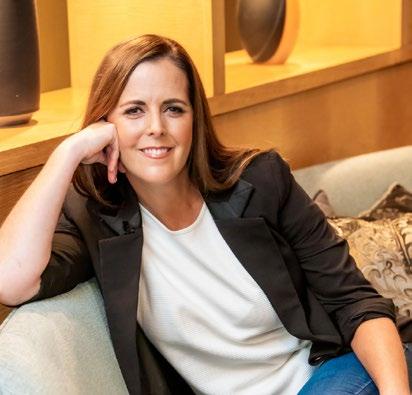
12 // SUMMER 2023 // Bridge
Stephanie Thompson
“I have a pain rating scale (from zero to ten), which I use with my husband, so he knows immediately where I’m at,” she says. “If we’re out, say at a family barbecue, and I tell him I’m a five he knows it’s time to wrap things up, find the kids and start saying our goodbyes. If I’m seven, I’m already lying on the couch, and anything higher than that I’m tagging out for the night, and he has to get dinner and put the kids to bed and whatever else needs to be done. “He never complains but this is not the life we imagined.”
Steph says one of the constant challenges is having to explain her situation when she looks otherwise well. “We so easily make assumptions, especially based on the way people look and there is a need for all of us to check ourselves before we do so,” says Steph. “Education and awareness can open people’s eyes and get us to look and think in a different way. Having these conversations is so necessary to be able to tackle and reduce the stigma and obstacles in our society.”
Having any chronic condition, particularly a disabling one is both mentally and physically wearing. During our interview, Steph is waiting for her daughter a good forty minutes before school finishes for the
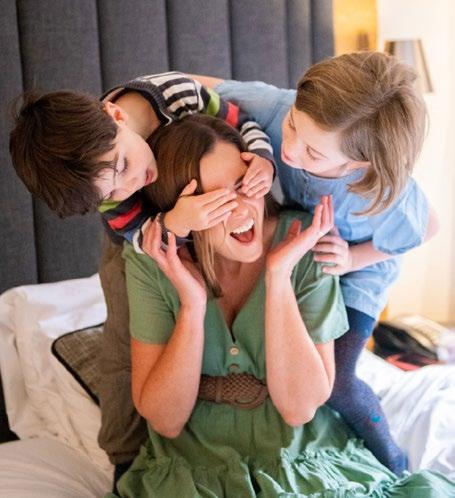
day. “If I don’t get here early then I’m forced to walk, and that’s the thing with dynamic disability too, that even though I’m in pain and discomfort, because it’s invisible, I have to do it because there is no other option. There’s no support to say maybe I could just drive by and pick her up unless I tell the school about my broken vagina, and I don’t want to do that. So, like a lot of women, I suffer in silence. And when I get home the kids really pay for it because I’m lying down with my feet up and I can’t do much for or with them.”
Steph says her time requires careful planning to enable her to get through each day, which involves thinking about how to allocate her energy and functionality. “We call it spending our ‘bickies’,” she says. “I mentally have to prepare for every step of every day. I need to know where I am going to spend my ‘bickies’ that day. If we’re going to a family picnic lunch, I won’t attempt to do anything else that morning. I’ll just get dressed, then we’ll go and that’s it for me until the next day.”
Bridge \\ Summer 2023 \\ 13
One of the kindest things we can do for people with chronic illness and disability is to believe them.”
Stephanie Thompson with her children
Steph is always pondering what she can do to live the best life she possibly can and how she can help others to do the same. “Even with my career, that’s been a massive impact of dynamic disability,” she says. “My previous employer, who I’d been with for twenty years, offered no support, and I also didn’t have the language or the terminology at the time to clearly communicate what I needed. Now I think it would be a very different conversation.”
When Steph returned to work as a teacher after the birth of her child, she requested the classroom closest to the toilet. There was only one and she needed close and frequent access. She was naturally concerned about having to leave her class of young children unsupervised for too long but despite her pleading, another teacher refused to swap. Steph kept working for as long as she could, but eventually had to make a tough decision. “The result was I had to medically retire myself from my career, because there was no choice, no support and no help,” she says.
“Something I realised was that I had lost my voice,” says Steph. “At the age of 31, I was the youngest female primary school principal in Sydney. I’d worked so hard and achieved so much, then by 35 I’d become this timid, shy person who said ‘okay, I’ll stand down,’” she says. “I didn’t have the level of power to be my own advocate. I was very vulnerable and that’s not who I was. I didn’t get this far by shying away from things or giving in.”
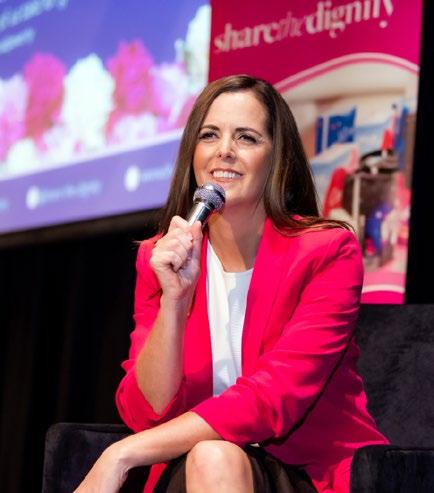
It may take time to find the strength in vulnerability and your voice. Firstly, being in a vulnerable space
you need to find a way to just function in daily life, then you can move to the next stage where you can say to people ‘this is what I need, and you need to hear what I need.’
Steph intends her future for Bravemumma is to be a human resources (HR) advocate for women with prolapse in the workplace. “They can go through rehabilitation and any adjustments they need to help them function then be supported to transition back to work, because their contribution is of huge value. They can still give a lot to a company or business but maybe they have to sit more often or even lie down from time to time or be close to a toilet, and the space and the understanding for that needs to be provided,” she says.
Steph gives the example of a woman in her community who began experiencing faecal incontinence with the onset of menopause. “She works as a nurse but can no longer lift people so is also facing medical retirement before her time is up,” says Steph. “I want to be an advocate for people
14 // SUMMER 2023 // Bridge
Stephanie Thompson
in this situation. This is where I want to come in and point out that she can still do everything else, all the observations, administration, case reports etc. and if someone else can do the lifting, surely there is still a role for her here, surely, we need to be thinking like that.”
“I think we need to be having these discussions with government bodies like the NDIS and Medicare who can provide support to women in this pelvic health space,” she says. “There are zero funding dollars. Any pessary I need to buy, and any physiotherapy has to be self-funded and yes, I’m privileged to be able to do that but there have been times for us when it was hard to find those funds.”
Steph did go through the application process for funding from the NDIS but despite going through this lengthy procedure was rejected. “It turns out they hadn’t assessed me based on my medical records. They just told me that a prolapse could be fixed with Kegel exercises!” she says. “I was dumbfounded by that. Because of the shame and taboo, we’re not talking about it, but at what point are we going to start supporting the mums who are trying to raise the future generations of kids?”
Although Steph has had limited success with numerous treatments for her condition, she remains optimistic that the options will improve and is for now content to take ‘small wins’ along the way. She has been closely following the work of three young engineers in the United States who have developed a new type of pessary, designed to be inserted like a tampon applicator then open like a mushroom once inside. Steph is excited to also be sharing her lived experience as a keynote speaker and hopes to be a presenter at more conferences that address pelvic organ prolapse in the near future as well as working towards a Bravemumma LIVE forum one day. Steph’s courage and enthusiasm to facilitate change is both inspiring and powerful. After suffering in silence, she has achieved so much, and her motivation, despite her disability, is impressive. She is intent on supporting women at every phase and stage of their lives and has established a podcast community – The Lowdown with Bravemumma –where she talks to health professionals and women with lived experience to help other women navigate the pelvic health space. As it says on her website ‘Bravemumma is also a community, a mummahood of women lifting each other up and supporting each other to heal.’
WHAT IS PELVIC ORGAN PROLAPSE?
The pelvic organs, which include the bladder, vagina, uterus and bowel, are held in place by the pelvic floor muscles and supporting tissues such as ‘fascia' and 'ligaments'. These help to join the pelvic organs to the bony side walls of the pelvis and keep them in place.
Your pelvic floor muscles also work to support the pelvic organs from underneath. If the supporting tissues are torn or stretched, and the pelvic floor muscles are weak, then the pelvic organs may not be held in their right place. Pelvic organ prolapse (POP), occurs when one of the pelvic organs sags and may bulge or protrude into the vagina.
WHAT IS A PESSARY?
A pessary is a removable device, often made from silicone, which is inserted into the vagina to support the pelvic organs. There are different types of pessaries, depending on the level of support a woman needs, requiring individualised assessment. For more information go to Let’s talk more about pessaries
Bridge \\ Summer 2023 \\ 15
Listen to the podcastThe Lowdown with Bravemumma - What is a dynamic disability?
Request to join the online free support group for women living with prolapse.
For further support – Australasian Birth Trauma Association
One in three women experience leakage from the bladder or bowel (incontinence). There is help available – you’re not alone. In many cases, incontinence can be treated, better managed or even cured.


Call National Continence Helpline 1800 33 00 66 Scan the code for further information or visit continence.org.au The Continence Foundation is a not-for-profit organisation and peak body promoting bladder and bowel control health. Always rushing to the loo? It doesn’t have to control your life
Speak to a Nurse Continence Specialist for free, confidential advice.
ABOUT THE NATIONAL DISABILITY INSURANCE SCHEME
The National Disability Insurance Scheme (NDIS) provides individualised support for people with a permanent and significant disability. The scheme is administered by the National Disability Insurance Agency (NDIA) and is designed for individual control with greater flexibility and choice.
WHAT WILL THE NDIS FUND?
The NDIS will fund reasonable and necessary supports.
• A ‘reasonable’ support is one that is fair and represents good value for money.
• A ‘necessary’ support is one which you must have to live your life independently.
The NDIS pays for different supports for different people depending on their goals. Two people with similar impairments may have very different NDIS plans because their personal goals may not be the same. Examples of the supports the NDIS will pay for include:
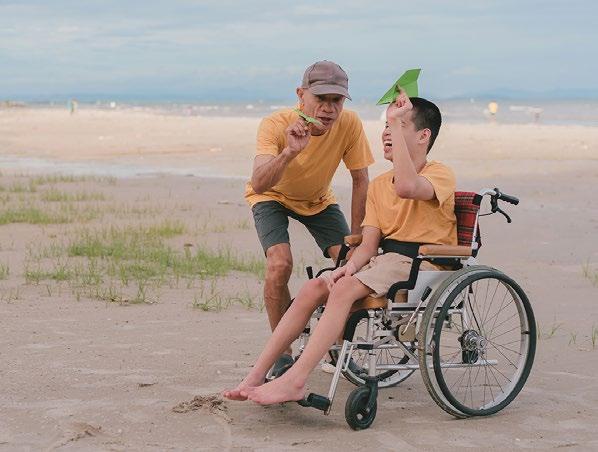
• Transport
• Support workers
• Therapy
• Aids and equipment
• Workplace help
• Home or vehicle modification.
WHO IS ELIGIBLE FOR THE NDIS?
To be eligible for the NDIS you need to be:
• Under 65 years of age
• An Australian citizen
• Have a permanent impairment and either can’t join in activities or do things without help from others, assistive technology, equipment, or home modifications.
The NDIS website’s Eligibility Checklist will give you an indication of your eligibility.
If you are eligible and you require continence products, these will be considered in your planning discussion and if approved, will replace CAPS payments. If you are not eligible for NDIS, you should continue to receive CAPS.
HOW TO APPLY
If you are eligible for the NDIS, the NDIA will meet with you, together with your family or carer if you wish. Together you decide which supports you need and develop a NDIS plan. Funding will be allocated depending on your needs.
Bridge \\ Summer 2023 \\ 17
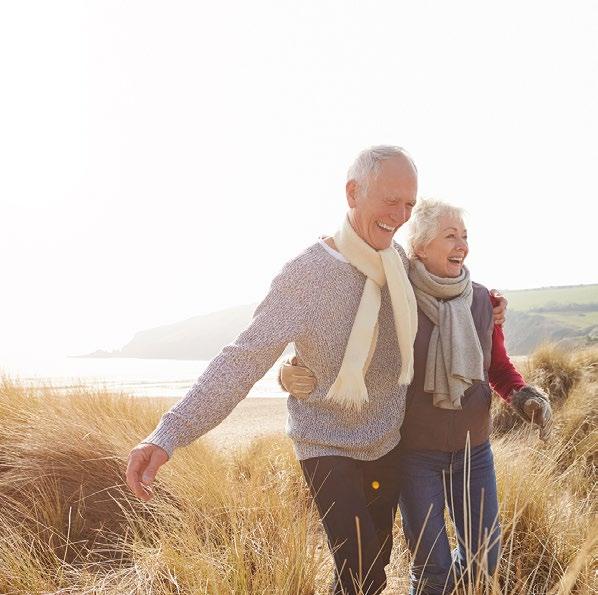

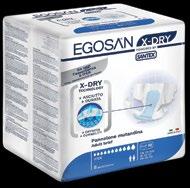

EGOSAN X-Dry Adult Continence products Stay dry for longer For more information and to order noblehealthcare.com.au Phone 1800 780 699 • Drier skin for longer due to hyper absorbent X-Dry technology • Over 8 hours of guaranteed protection for a more comfortable night • Reduced skin irritation and fewer changes needed • NDIS approved supplier • Buy direct from the importer and save. The Continence Foundation of Australia appreciates the support of advertisers in publishing Bridge. Advertising conforms to the standards required by the Continence Foundation of Australia, but endorsement is in no way implied by the publishing of said material. Introducing the NEW hyper absorbent X-Dry technology! 8h
COMMON QUESTIONS ABOUT INCONTINENCE AND NDIS PLANNING

What do I need to think about regarding incontinence in the planning process?
Why is preparing for a planning meeting important?
Preparing for a planning meeting with the NDIA or Local Area Coordinator (LAC) is important to get the best from your NDIS funding.
What do you need to think about when planning?
You need to think about considerations such as:
• your aspirations
• your goals
• your strengths and abilities
• the type of supports you need
• steps that will help you achieve your goals
How do you manage your plan?
Your plan can be managed by:
• yourself (with or without family/friend/carer support)
• a registered plan management provider
• the NDIA, or
• a combination of the above.
How are continence products and aids funded under the NDIS?
If your continence issues are due to your disability, all your continence products and aids should be supplied through your NDIS plan. These products and aids must be included in your plan.
Ask yourself:
• Which products do I use now?
• Are the products that I am currently using managing my incontinence effectively?
• Should I have a continence assessment to make sure I am managing my incontinence effectively?
• Should I have a continence review to determine if my needs have changed since my last assessment?
• Is my incontinence preventing me from achieving my goals? If so, what can be done to improve the situation?
• Can my incontinence be better managed?
You may not be able to answer all these questions. You can get help from the National Continence Helpline by calling 1800 33 00 66 to speak to a Nurse Continence Specialist for advice and information about local continence services and suitable products / aids.
How do I get my products?
Your continence products will be sent to you at intervals of your choosing. Think about the storage of continence products and make sure delivery charges are included in your plan.
It is vital that anyone assisting in the development of NDIS plans (including NDIS planners, Local Area Coordinators or other service providers) understands the importance of taking into account your continence needs.
For continence assessments, therapy and reviews are funded under Capacity Building – Improved Daily Living.
A comprehensive continence assessment takes time. You will require a minimum of 4-6 hours for a full assessment, report and product prescription. If your needs are complex and include multiple products or travel then additional hours may be required.
A Continence Plan and/or Therapy may be recommended in the initial report. Additional hours may be required to implement a continence plan and/or therapy to improve your continence status and achieve your goals.
Bridge \\ Summer 2023 \\ 19
THE BENEFITS OF A CONTINENCE ASSESSMENT
Amy de Paula has extensive experience working with the NDIS, both in her former role as an Occupational Therapist (OT) and in her current role as the NSW Service Manager for the Continence Foundation of Australia.
WHAT DOES A
CONTINENCE
ASSESSMENT OFFER?
A continence assessment looks at the reasons for the incontinence or bladder and bowel control issues, and how to best support the person to manage it. This can range from recommendations that address the cause of the incontinence, to improved management techniques that can reduce the impact on lifestyle. “What people may think as normal for their bladder or bowel function may not be and can have negative effects on their health and daily living. An assessment can provide advice and means to access ongoing support,” says Amy.
“The intention of the NDIS is to be a system that is individualised to peoples’ needs and provides them with the right level of support that fits their disability and their life,” says Amy. “For many people, a continence assessment will be an integral part of their NDIS plan. It is more than just generating a report to support funding consumables. It might change a person’s continence management and improve their quality of life.”
WHAT HAPPENS AT A NDIS CONTINENCE ASSESSMENT?
Your Nurse Continence Specialist will discuss your goals and what you would like to achieve from your assessment.
Your Nurse Continence Specialist will ask lots of questions about you and your bladder and/or bowel issues.
After your appointment, your Nurse Continence Specialist will write a detailed report.
Any suggested continence products, specific supports or therapy considered will be based on your individual situation and whether it is reasonable and necessary.
For many people, a continence assessment will be an integral part of their NDIS plan. It is more than just generating a report to support funding consumables. It might change a person’s continence management and improve their quality of life.”
“A continence assessment is a vital service and is also available via telehealth so we can support anyone nationally,” says Amy. “It’s also important to remind carers and providers about this service, which may help them better support and manage the care of someone living with incontinence.”
WHAT NEXT?
A continence assessment may serve several purposes. It may be requested by an NDIS Planner to support the person having an appropriate budget for consumable products in their plan. The Nurse Continence Specialist may also provide new options
20 // SUMMER 2023 // Bridge
With Amy de Paula, NSW Service Manager, Continence Foundation of Australia
to the person, such as new technology, products or best practice techniques which can improve the quality of care, continence status and quality of life.
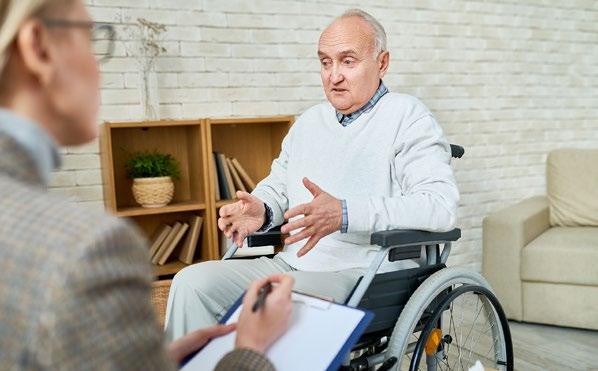
At times, the assessment may highlight the need for further involvement with a Nurse Continence Specialist to establish a new routine or procedure, or to provide training to support staff. The Nurse Continence Specialist may also identify which other services may be required to improve quality of life and/or continence status, for example, dietician, GP, urologist, pelvic floor physiotherapist, occupational therapist or behaviour support.
“For example, a person may be on medications which have a negative impact on bladder and bowel, causing continence issues,” says Amy. “So, you need to build a team around your needs including your continence needs and a Nurse Continence Specialist can be an important member of that team.”
Like any system, the NDIS can be challenging to navigate, however Amy believes a really positive step towards improvement and progress is the recent appointment of Paralympian and disability advocate Kurt Fearnley to the National Disability Insurance Agency (NDIA), the agency that runs the NDIS. With a new CEO and board members, comes new perspectives and fresh ideas for a better service.
In a recent press announcement Kurt said “I want to see the NDIS continue to be what we lobbied for all along – a purveyor of disability rights, which are human rights. We need the NDIA to be a success
for the country we believe it is. The country needs an NDIS that is trusted, is efficient and effective and I hope that I play a part in that. Disability is complex, disability is varied and there are many disability stories to tell. To potentially see people with disabilities - look on the scheme and see themselves as chair, as a chunk of the board – I think that is an exciting time,” he said.
LOOKING TO BOOK AN ASSESSMENT?
The Continence Foundation of Australia provides NDIS-funded continence supports, such as comprehensive assessments, reports and support to improve continence-related care. We have a nationwide telehealth service, and a limited capacity for face-to-face services in Melbourne and Sydney. Continence assessments, therapy and reviews are conducted by Nurse Continence Specialists who are Registered Nurses with qualifications and experience in continence assessment, management and care.
Contact us on (03) 9816 8266 or clinical@continence. org.au for more information. Our referral form, service agreements and costs can be viewed here on our website: www.continence.org.au/ndis-continenceservices.
WHERE ELSE CAN I GET HELP?
The Foundation also provides The National Continence Helpline 1800 33 00 66 which is staffed by Nurse Continence Specialists who offer free and confidential advice, a wide range of continence resources and information on local continence services, including other NDIS providers.
The Helpline is available to anyone living in Australia and is funded by the Australian Government Department of Health and Aged Care. It operates 8am-8pm (AEST/AEDT) Monday to Friday excluding national public holidays.
Bridge \\ Summer 2023 \\ 21
LEANNE'S STORY
HOW
TRAVEL
HELPED ME TO RECLAIM MY LIFE
Leanne has always been a traveller at heart, having visited thirty countries before she turned thirty years of age. She had met her husband in Ireland, spent time in London and regularly went to visit her best friend who lived in Germany.

Leanne’s travel plans all came to a sudden halt after the birth of her second child in 2011. During childbirth Leanne was injured, experiencing a fourth-degree tear of her vagina (the most severe tear) which left her totally incontinent with no faecal control. For six months she waited for a surgeon to perform reparative surgery, during which time she had to wear continence pads, alongside her new baby and toddler who were both in nappies. Unable to make it from the lounge to ensuite without having an accident, Leanne couldn’t leave the house, go to the shops, or visit the office. She was completely housebound and isolated. Alongside managing the physical symptoms, her mental health also took a toll. Leanne admits to feeling disgusted, ashamed, guilty and totally alone, with recurring post-traumatic stress disorder (PTSD) symptoms that resulted in panic attacks (sometimes up to 30 per day) and faecal incontinence. “You can’t even make it up – I felt it was the worst thing that could have happened,” she says.
Half a year passed, and finally Leanne was scheduled to have surgery. She had six operations over the following six months, resulting in over fifty days in hospital, with her husband Patrick taking time off to care for her and look after the children. She was fitted with a temporary ileostomy requiring stoma bags for four months, which was then reversed. Again, Leanne found herself totally incontinent, looking after a toddler, breastfeeding her new daughter, and struggling more than ever. There were days of excruciating pain and regular toileting accidents. Leanne admits her young son was toilet trained before she was.
Leanne underwent lifestyle changes to try and get back to life as she knew it. She cut out all alcohol and gas causing vegetables and religiously drank water. She had two coffees every morning first thing, to make sure she went to the toilet, and only then, could she start her day.
Despite her symptoms being better managed, at the five-year mark Leanne’s anxiety returned as she remembered the surgeon saying her repair surgery would last about five-twenty years. She became allconsumed by this timeline, and every time she went to the toilet would check for signs of the wound breaking down. She was exhausted and stressed. That was until she experienced a self-confessed ‘light bulb moment’ whilst watching Kung Fu Panda 2 with her children. During the movie, there was a scene with the quote “you’ve got to let go of that stuff from the past as it just doesn’t matter…the only thing that matters is what you choose to be now.”
From then on, Leanne looked at everything differently. She decided that she and her family needed to “reclaim” themselves and go back to doing what they loved most. For Leanne and Patrick, this was travel.
The initial goal was to return to Ireland to see family, before taking the kids to Disneyland Paris. The thought of travel brought about its own unique set of challenges – the long plane trip, the airport queues, the tedious security checks, the walking, the different food, being unable to find a toilet, all of it. But Leanne was determined to persevere “What’s the worst that can happen?” she asked herself. “A few very unpleasant moments cannot ruin seeing the Eiffel Tower at night, being on a gondola in Venice, seeing friends and family…no matter what, that is priceless.”
So, Leanne and her family set off on their journey overseas. She stuck to her routine and for all her worrying, she never actually had an accident. She had proven to herself that she could manage her symptoms, and that gave her the confidence to
Leanne and family, Vatican City, Italy
22 // SUMMER 2023 // Bridge
pursue other adventures. Since that initial trip, she has returned to England (including Harry Potter World), Germany (once alone for a wedding, then as a family whilst visiting friends), Italy (for her 10-year wedding anniversary) and stop overs in Dubai and Doha.
For those who experience incontinence and want to travel, Leanne’s advice is “feel the fear, accept it, be prepared as best you can and GO ANYWAY!” Yes, while she has had accidents and it can feel nerve wracking, the reward of travelling far outweighs anything that can happen. She recommends building up your confidence – “start with overnight stays in your hometown. Push out to a week away. Then bite the bullet and declare that you are entitled to live a wonderful and fulfilling life and do it,” says Leanne.
WHAT IS AN ILEOSTOMY?
An ileostomy is performed to help direct digestive waste out of the body, often due to a bowel condition such as bowel cancer, inflammatory bowel disease (e.g. Crohn’s Disease) or bowel trauma. This involves surgically making an opening that connects the small intestine to the outside of the abdomen. For some people, this surgery is temporary, often to allow the large bowel or anus to recover and can be reversed once the body has healed.
WHAT IS POST TRAUMATIC STRESS DISORDER (PTSD)?
PTSD is an anxiety disorder that can occur in people as a result of experiencing or witnessing a traumatic event involving themselves or others. Those with PTSD often feel intense emotional stress and disturbing thoughts about the traumatic event or events, which can interfere with day-to-day life and relationships.
LEANNE'S TOP TIPS FOR
TRAVELLING WITH BOWEL INCONTINENCE
9 BE PREPARED
Make a checklist to ensure you have all the essentials ready to go. This includes all your creams, medicines, wipes (including antiseptic wipes for the plane/train/bus/toilet seats), two changes of clothes in your hand luggage (and one in your day pack while touring around), several spare pairs of undies, nappy bags for disposing of soiled undies and any other portable tools you need to make you feel confident and secure.
9 BE STRICT WITH YOUR DIET
As tempting as it is, try not to eat street food. Be mindful of chili and spices and choose plain meals wherever possible. Coffee strength also differs around the world, so if you’re not sure, just bring your own from home! One tummy upset could leave you room-ridden for days. It’s just not worth it.
9 PLAN FOR THE PLANE TRIP
We all know plane food can be a bit hit-and-miss, so try to take some of your own food wherever possible. I bring my own cucumber, carrot and apple cut up in snack bags so I can ensure I’m having enough fibre for long haul travel. I also avoid gassy drinks (juice or water only) and don’t have any alcohol. I also bring a laxative just in case, as you can feel uncomfortable from all that sitting and that can impact your toilet routine too.
9 HAVE A COIN PURSE FOR EUROPEAN TOILETS!
It’s easy to get caught out in Europe where there is often coin entry for public toilets. Make sure you always have coins allocated for your next visit to the loo.
9 USE THE NATIONAL PUBLIC TOILET MAP!
When you’re travelling within Australia, use the National Public Toilet Map to help plan your trip. It’s a free App that allows you to search for the closest public toilet and comes in handy if you’re visiting new places or going on a road trip. You can access the National Public Toilet Map at continence.org.au/national-public-toilet-map
Leanne is a Counsellor at Blue Hearts Counselling and the author of a children’s book “When Mummy went to hospital” which her own children Connor and Molly illustrated.
Bridge \\ Summer 2023 \\ 23
Scan here to access the
map
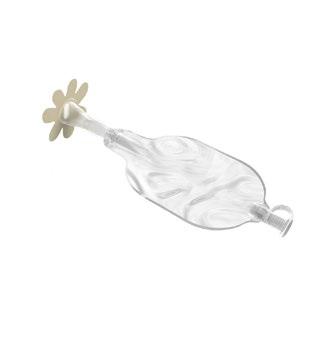

 The Continence Foundation of Australia appreciates the support of advertisers in publishing Bridge.
Advertising conforms to the standards required by the Continence Foundation of Australia, but endorsement is in no way implied by the publishing of said material.
The Continence Foundation of Australia appreciates the support of advertisers in publishing Bridge.
Advertising conforms to the standards required by the Continence Foundation of Australia, but endorsement is in no way implied by the publishing of said material.
NATIONAL CONTINENCE HELPLINE TRAVEL TIPS FOR THE CHRISTMAS HOLIDAYS
CONTINENCE PRODUCTS
Write a list of all the supplies you will need for your trip e.g., continence pads, condom drainage or catheters, wipes, hand sanitiser, tissues, scented rubbish bags, change of clothes, bed protection, travel urinal (male or female) etc. Work out how much you need to take with you and what you can buy easily on your trip (regular continence pads are often available throughout Australia and in many overseas countries).
If staying overnight, pack a disposable absorbent sheet (bluey) or washable bed pad to protect any bed linen. This may help to give you peace of mind. Order your continence products in advance as some suppliers are closed over Christmas or delivery may be delayed due to increased demand.
MEDICATIONS
Talk to your doctor about medication for the trip. This may include things like anti-diarrhoeal medication for loose bowel actions, laxatives for constipation or medication for overactive bladder (needing to rush to the toilet and going often). If a medication requires a script, take the script with you if you are going away for an extended period of time as you may need further medication. Be aware a lot of people may experience constipation from a change in routine or prolonged sitting whilst travelling. Diarrhoea or gastro after eating something that upsets your stomach may also occur. Discuss ways of managing this with your doctor, especially if you are inclined to experience either of these.
TRAVEL AROUND AUSTRALIA
If going on a road trip or travelling in Australia, access the National Public Toilet Map so you feel confident knowing where you can access public toilets around Australia and what facilities the toilets have. You can then plan your trip so you are confident you can find suitable public toilets.
Have a copy of the Toilet help card with you to alert people if you need to use the toilet urgently. Call the National Continence Helpline on 1800 33 00 66, for advice on travel and bladder and bowel control.
AIR, BUS OR TRAIN TRAVEL
If travelling by plane, bus, or train on a long trip, always keep enough continence supplies for 48 hours in your carry-on luggage. Don’t pack it all in your suitcase in case your bags go missing.
Dress comfortably with clothes that are easy to change or pull up and down.
Avoid caffeinated drinks and carbonated fluids on the plane. This may affect your bladder and the amount of gas you pass. Sip fluids, preferably water, regularly to gradually fill your bladder and keep hydrated.
Respond to any urge to use your bowels and don’t ignore it as this may result in constipation.
Move as much as you can to help stimulate your bowels when you are awake.
Book an aisle seat close to the toilets to allow easy access as needed during the trip.
If you are comfortable to do so, speak to the travel staff to inform them if you need quick access to the toilet or support using the toileting facilities.
TRAVELLING OVERSEAS
If travelling overseas, learn how to ask for a bathroom in the local language.
Find out if there are any costs, customs, or different features about the toilet facilities you will be using.
Always carry a bag with your continence supplies including tissues, wipes, and hand sanitiser.
Bridge \\ Summer 2023 \\ 25
READINESS FOR KINDER AND SCHOOL TOILET TRAINING
readiness for toilet training
When to start toilet training your child can be a challenging decision for parents. Family and friends are often very keen to give advice. As a parent, you know your child best and what works for your family situation. It might be helpful to understand what the signs of readiness for toilet training are. This may help you decide when it might be a good time to start your child’s toilet training journey.
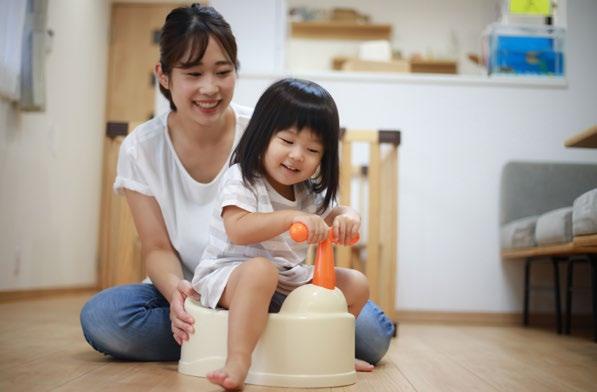
A research review on when to start toilet training and the signs of toilet training readiness, found that there are 21 signs of readiness for toilet training. These signs start to be developed from 1 ½ months of age (ability to initiate behaviour) through to 36 months of age, when most of the 21 signs are usually fully developed. Look for the signs of readiness, as listed below, which may help guide when to start toilet training your
child. Remember a child doesn’t need to have all the signs of readiness. If your child can stay dry for 1 ½ - 2 hours, knows the difference between being wet and dry or asks to go nappy free, and can follow simple commands, you are probably already well on your way. Remember to expect accidents and have a mop and bucket ready at hand. It is also okay to take a break if you or your child need it or require professional support.
You can use the following list of toilet training readiness signs to think about which skills your child has developed or is developing. Being able to control your bladder and bowels and using the toilet are complex things to do. Don’t forget to give yourself and your child the time and energy you all need when embarking on their toilet training journey.
Once your child is toilet trained, you can enjoy the positive effects this will have on them socially and on their health. It will also have a financial benefit plus be positive for the environment. Please call the National Continence Helpline on 1800 33 00 66 to speak confidentially to a Nurse Continence Specialist if you would like individual advice on toilet training.
26 // SUMMER 2023 // Bridge
Janie Thompson, Nurse Continence Specialist and National Continence Helpline Manager talks about
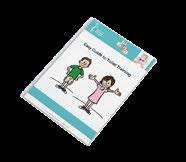
THE 21 SIGNS OF READINESS FOR TOILET TRAINING You may find these guides particularly useful: EASY GUIDE TO TOILET TRAINING GIRLS AND BOYS TOILETING SEQUENCE PICTURES 1 Can initiate behaviour 2 Can sit stably without help 3 Can walk without help 4 Can pick up small objects 5 Can say ‘no’ as a sign of independence 6 Has voluntary control of bladder and bowel function 7 Can respond to direction and follow simple commands 8 Can express the need to pass urine or a bowel motion or has wet/soiled self by signs or words 9 Likes to put things in containers 10 Is aware of bladder sensations and the need to use the toilet 11 Understands toilet related words and can talk for themselves 12 Is interested and wants to be involved in toilet training 13 Has a bigger bladder capacity 14 Wants to do complete tasks independently and is proud of this 15 Asks to use the toilet 16 Wants to be clean and is upset if wet/soiled 17 Wants to wear grown up clothes 18 Can pull clothes up and down 19 Does not use bowels overnight 20 Starts to put things where they belong 21 Can sit still on the toilet for 5-10 minutes
TRAINING RESOURCES Bridge \\ Summer 2023 \\ 27
The Continence Foundation of Australia has several resources available to help your child reach those important milestones and gain greater toileting independence. All our resources are user friendly with pictures and easy to follow steps, providing a general guide for parents and caregivers. Download your free copies today from our website toilet-training
TOILET
Search for the closest public toilet anywhere in Australia on the National Public Toilet Map!
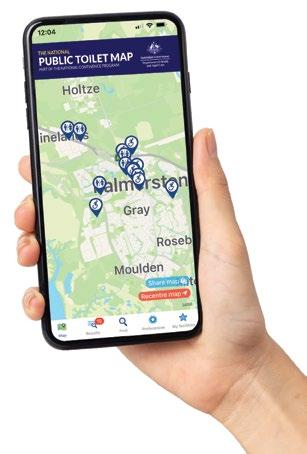
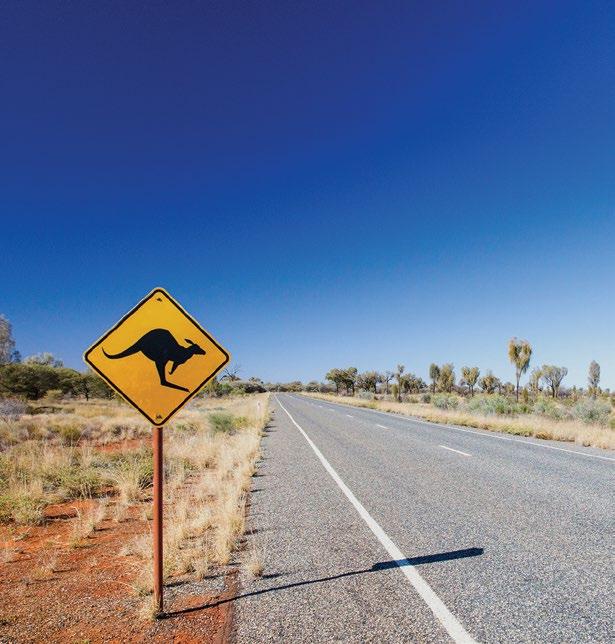
Scan here to access the map
The National Public Toilet Map has over 22,000 public toilets listed, including opening times and available facilities.
Go online at toiletmap.gov.au or download the National Public Toilet Map app via the Apple App store or Google Play.


























 The Continence Foundation of Australia appreciates the support of advertisers in publishing Bridge.
Advertising conforms to the standards required by the Continence Foundation of Australia, but endorsement is in no way implied by the publishing of said material.
The Continence Foundation of Australia appreciates the support of advertisers in publishing Bridge.
Advertising conforms to the standards required by the Continence Foundation of Australia, but endorsement is in no way implied by the publishing of said material.



